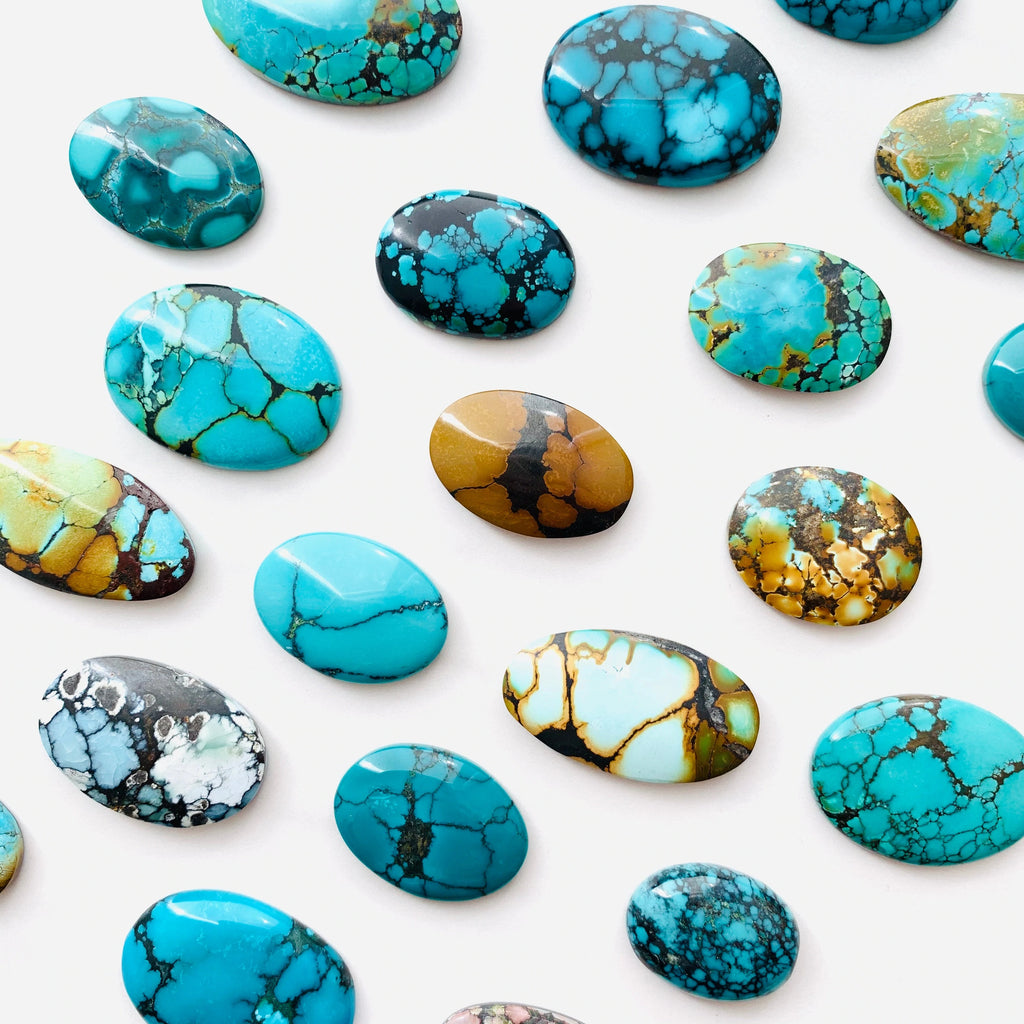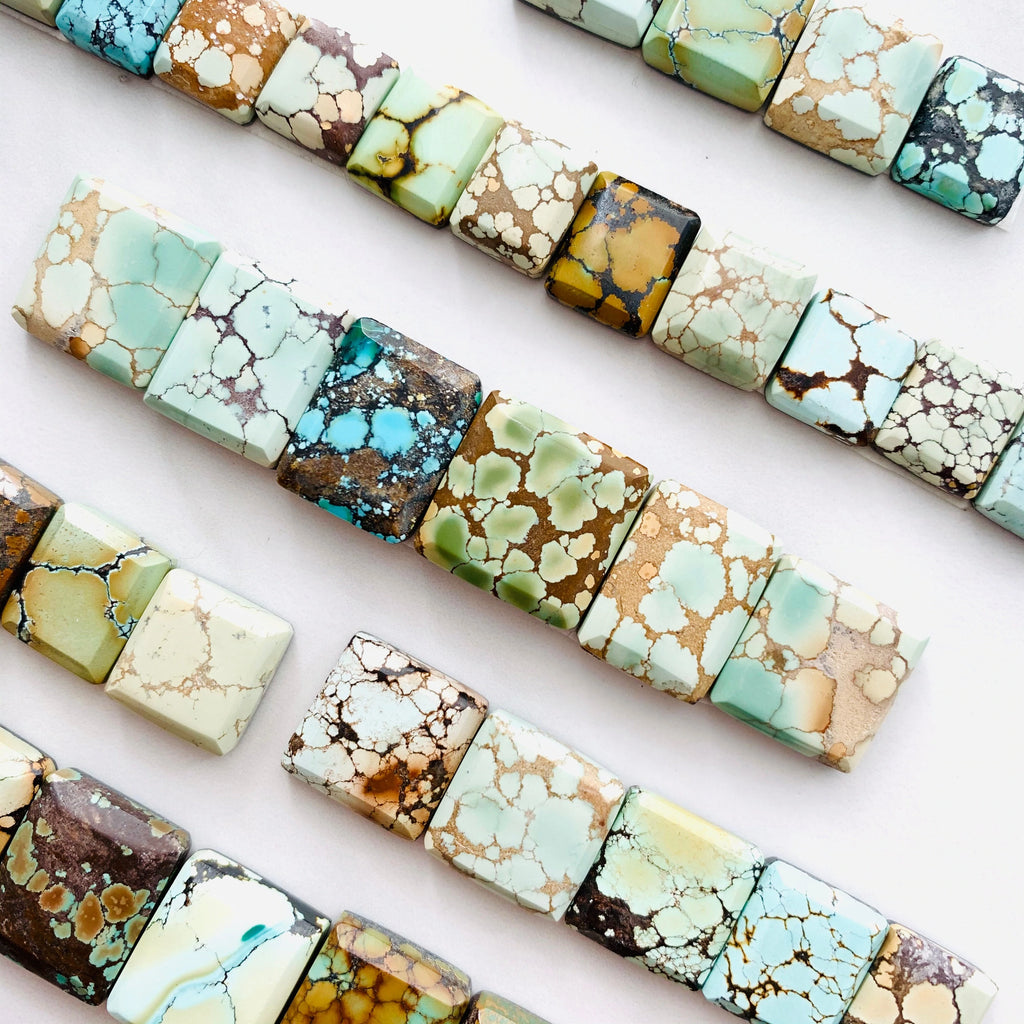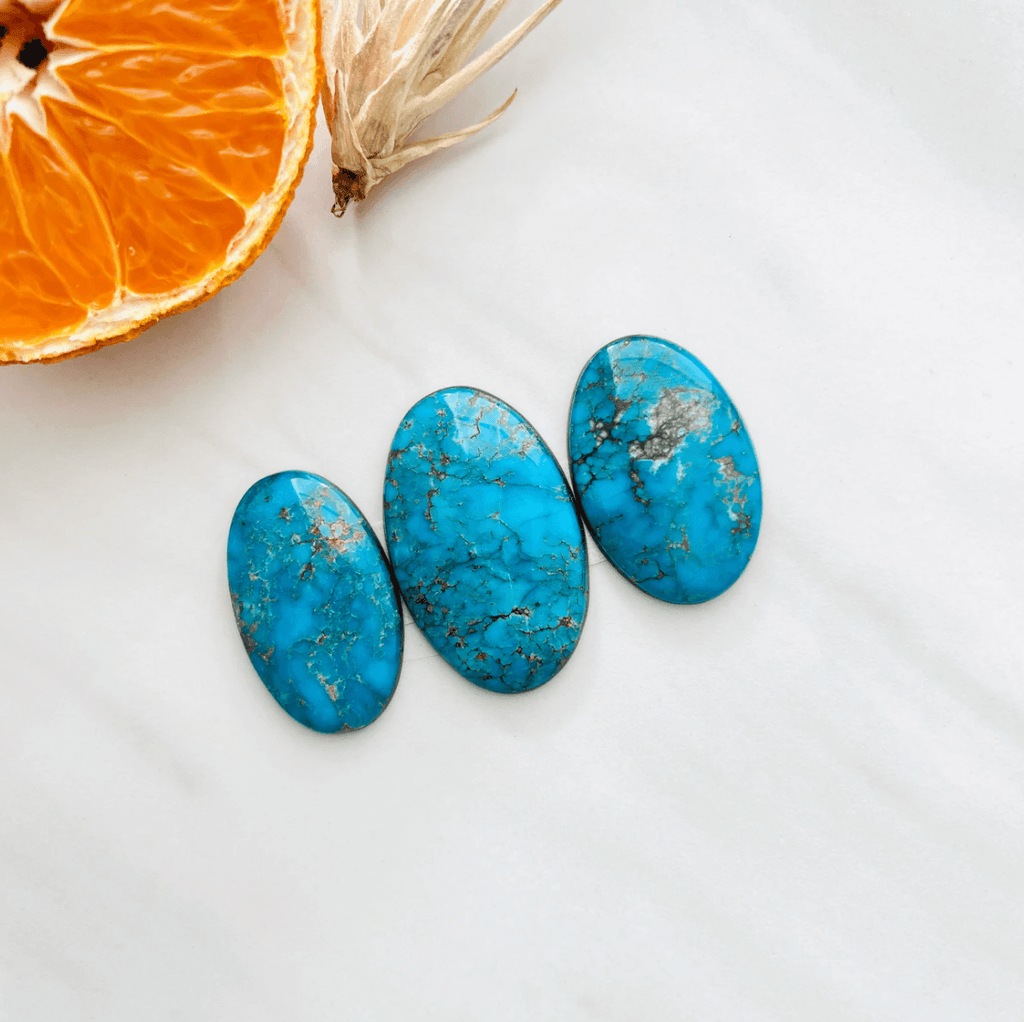Exploring the Different Types of Turquoise
Did you know that turquoise gets its blue and greenish hue from copper and iron?
Turquoise continues to be a popular material even thousands of years after humans first began to carve it. It's a gemstone that found popularity on practically every continent, for Native American tribes as much as the great Chinese Empire. But many do not realize that there are many different types of turquoise.

Turquoise, like all gemstones, forms when all the geological conditions are right. But variations in these conditions can produce special types of turquoise that you might not find elsewhere, making them so unique. 💚
Keep reading as we discuss how turquoise is formed, and the variations you can choose from.
How Does Turquoise Form? 🤔
Turquoise is a natural gemstone known for its unique blue-green hues. It has a color that is quite uncommon. But the formation of turquoise only requires very common geological conditions.
All turquoise needs to form is rainwater, copper, and phosphate minerals. As rainwater trickles down through cracks in the earth's surface, it brings the metal and these minerals with it. Over the course of many years, what we know as turquoise begins to form.
This is a delicate process, as it requires these mineral-laden drops of water to percolate slowly. The careful dissolution of copper in the minerals allows the gemstone to form. You can then cut and polish turquoise to your liking.
This bluish/greenish color happens as a result of copper oxidizing over time. Vikings used copper paint to color their shields blue. The Statue of Liberty, made from copper, has turned green as a result of the same effect.
The name turquoise originates from the French word for Turkey, given that the French traded it there on the way to Europe.
Different Types of Turquoise 🤩
Turquoise gains different colors and qualities depending on which minerals it forms with. Most turquoise shows the quality of being soft and easy to shape or cut to a jeweler's specifications. However, some types of turquoise are not strictly turquoise, rather they look much like it.

The following are other kinds of turquoise you can find on the market:
- White Buffalo turquoise
- Sleeping Beauty turquoise
- Morenci turquoise
- Kingman turquoise
- Royston turquoise
- Carico Lake turquoise
- Bisbee turquoise
Let's discuss what makes all of these turquoise varieties unique, so you can choose the right kind for your style, preference, and liking.
White Buffalo Turquoise
Ever wonder why Native Americans love turquoise in their jewelry? At least part of the answer is that turquoise is abundant in the Southwestern United States. Our first stop on this list is Tonopah, Nevada.
White Buffalo turquoise, despite being labeled turquoise, is not technically turquoise. Instead, a dolomite stone. Dolomite is a lot like limestone with a grayish or whitish color.

Buffaloes were a staple for Native Americans. They were a food source as much as a source of materials. Of course, Native Americans had a very special relationship with nature, and therefore Buffalo were treated with respect.
Occasionally, a Buffalo is born albino, giving it an all-white color. Albinism is quite rare in nature, as is white Buffalo turquoise. Unlike regular turquoise, which grows in turquoise mines rich with copper, white Buffalo requires magnesium.
Needless to say, White Buffalo turquoise gives you an intimate window into Native American culture. It is incredibly rare, meaning it is quite expensive and in high demand.
Sleeping Beauty Turquoise
Sleeping Beauty turquoise is only a hop and a skip away from Nevada. You can find Sleeping Beauty turquoise in Globe, Arizona.
The name originates from the mountain range where turquoise mining is done. Locals say that this particular mountain range has the appearance of a sleeping woman.
Sleeping beauty turquoise has the richest, deepest blues of all other turquoise varieties. From sky blue to robin's egg blue, there are options for everybody. That said, the darker varieties tend to fetch the most on the market.

For many years, the sleeping beauty mine in Globe, Arizona was booming in copper and turquoise extraction. However, the boom days are over and this type of turquoise is now quite expensive.
If you want a stabilized, high-value gemstone that will only appreciate over the years, this is your ticket. Sleeping Beauty turquoise is one of the most valuable and sought-after to this very day, and is well loved by many of turquoise collectors, jewelers, and turquoise lovers.
Morenci Turquoise
Morenci turquoise sets itself apart from the competition by its deep blue color. It almost looks like lapis lazuli. Just take a look at these turquoise cabochons to get an idea.
If you're already in Arizona, then you're in luck. Morenci turquoise also belongs to the Grand Canyon state. Just as with Globe, Arizona, miners discovered this type of turquoise in copper deposits.
Like with Sleeping Beauty turquoise, the mines have since closed. But demand for Morenci turquoise has not diminished one iota.

Morenci is particularly desirable due to how deep the blue color is. This is thanks to high quantities of copper during the formation, as well as beautiful splotches of pyrite (also known as fool's gold). The varieties of Morenci that have pyrite veins are the most desirable of all.
Kingman Turquoise
You guessed it, we're back in Arizona again! Kingman, Arizona is the home to Kingman turquoise. And fortunately for copper miners as well as turquoise aficionados, the Kingman mine is still open.
While the mine uses modern methods, we have evidence that people were mining turquoise with hand tools over 1,000 years ago. After all, Navajo tribes in the area had been gathering turquoise long before colonizers arrived.
Kingman is also quite the looker. These are turquoise gemstones that have very beautiful colors from pale to dark blues. They include shades of green as well as fascinating matrices of white or black.
Very few mines can produce turquoise like Kingman. Like Morenci, Kingman has splotches of other minerals that give it a beautiful mixture of blue and other metal colors.

Like with most types of turquoise on this list, it is increasingly rare. Even though the mine is still open, turquoise is difficult to obtain. Like copper, it is a valuable product and costs a lot of money to extract from the earth.
Much of the Kingman turquoise requires additional stabilization and processing. This allows the stone to be more resilient when carved or shaped.
Royston Turquoise
We are back in Nevada, again. Royston turquoise comes from the Royston family, who founded the Royston mining district. Near Tonopah, this mine has operated since the beginning of the previous century.
Royston turquoise, like the above two, has a considerable variety of both turquoise and mineral matrices. To the layman, they may all seem the same. But to the experts, these all have unique qualities linked to the area where families mined them.

Royston turquoise, like others, looks great in jewelry. You can use it for whatever you want whether that be for healing purposes, or just to have a nice cufflink or brooch.
Carico Lake Turquoise
Carico Lake is yet another Nevada mine. But what sets Carico Lake turquoise apart from its predecessors is the unique lime green or apple green color. While this is the minority of turquoise that they produce in Carico Lake, it's the variety that garners the most attention.
Carico Lake gets these unique colors thanks to the presence of zinc in addition to the existing copper. In some cases, Carico Lake has a black matrix with very dark or light colors.
As a consequence of the stunning beauty that Carico Lake has, it can be a particularly difficult gem to cut. This means that Carico Lake benefits highly from stabilization.

In the early days, you may have heard a different name though. Many referred to Carico Lake as Aurora or Stone Canyon. But these are antiquated names that you are unlikely to hear even from the experts.
Carico Lake is a dry lake bed in Lander County, Nevada. Unlike other mining colonies, Carico Lake has a very brief mining season. This is due to its inclement winter weather and the remote location, which contributes to its higher cost and value.
Bisbee Turquoise
The last on our list takes us back to Arizona, to a little town called Bisbee. Bisbee derives its name from a judge who invested his money in their Copper Queen mine in the early days. And so Bisbee turquoise derives its name from the resultant town.
Believe it or not, turquoise was not appreciated at the time the way we do today. When miners discovered turquoise in the Lavender Pit, they saw no use for it. Until 1972, they disposed of any turquoise that they found into nearby landfills.
Originally, employees would collect turquoise they discovered on the job. It wasn't until much later that the mine began to sell the turquoise. They even allowed people to scavenge it from the landfill where they dumped it at first.

Bisbee turquoise includes matrices of magnesium, iron, and titanium, and has a "Bisbee blue" color. Unlike other turquoise varieties on this list, Bisbee turquoise is quite strong.
Find Turquoise from Turquoise Moose
Thanks to the discovery of many types of turquoise in copper mines across Nevada and Arizona, we have several beautiful turquoise varieties. You can mostly tell them apart by the color and the minerals in their matrices. No matter which kind they are though, they are all very beautiful and each one is unique.
Turquoise Moose provides all of the above types of turquoise. Whether you're looking for free-form turquoise, shaped beads, turquoise nuggets, or calibrated turquoise, we have some for you. Browse our collection today to get started on your turquoise journey :)
Subscribe to our Newsletter and get the latest updates about product launches, restocks, fun and exciting promos, features from your favorite jewelry artist, teachers, and more!
Suggested Products
3 comments
Much love
Give me turquoise any day. Keep your diamonds.
Beautiful gem stones, I work with mainly turquoise and silver. I love the stones you have shown.






















































